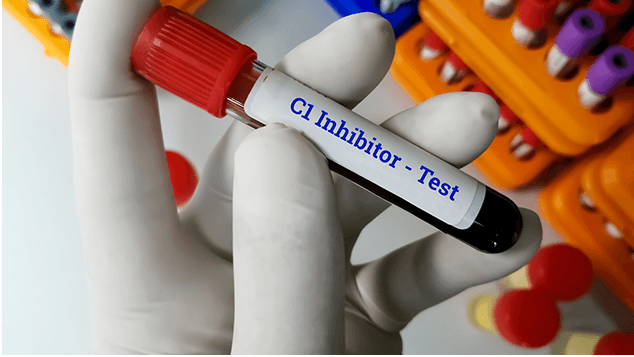
Optimizing Treatment for Rare Genetic Condition Hereditary Angioedema
Hereditary Angioedema (HAE) is a rare, unpredictable and potentially life-threatening genetic condition.

Hereditary Angioedema (HAE) is a rare, unpredictable and potentially life-threatening genetic condition that involves recurrent attacks of severe angioedema -- swelling under the skin. HAE affects about 1 in 50,000 people in the United States.
There are currently four specific FDA-approved products for on-demand treatment: Firazyr® (icatibant) and its generic icatibant, Berinert® (C1 esterase inhibitor [human]), Kalbitor® (ecallantide), and Ruconest® (C1 esterase inhibitor [recombinant]). Berinert and Ruconest are C1 esterase inhibitors that are given intravenously and can be self-administered. Firazyr, a bradykinin B2-receptor antagonist, is administered subcutaneously and can also be self-administered.
Treatment costs can vary based on the frequency and severity of attacks. Based on 12 attacks per year and one dose per treatment, icatibant has an approximate yearly cost of $61,000 compared to its branded version Firazyr at $134,000. Annual approximate costs for Berinert, Kalbitor, and Ruconest are $164,000, $188,000 and $165,000 respectively.
In addition to treating attacks of angioedema, patients with HAE may also require prophylactic treatment to reduce the likelihood of swelling in a patient undergoing a stressor or procedure likely to precipitate an attack (short-term prophylaxis) or to decrease the overall number, severity and burden of angioedema attacks. There are currently four specific FDA-approved products for prophylaxis: Cinryze® (C1 esterase inhibitor [human]), Haegarda® (C1-esterase-inhibitor, human, pasteurized), Takhzyro® (lanadelumab), and Orladeyo® (berotralstat). Similar to the on-demand agents, there have been no head-to-head trials comparing these prophylactic agents directly.
AscellaHealth’s end-to-end Specialty Pharmacy solutions enhance provider and patient education, increase compliance and persistency and improve patient access to high-cost specialty medications.
To learn more about the potential cost-saving opportunities for rare disease drugs, click here.